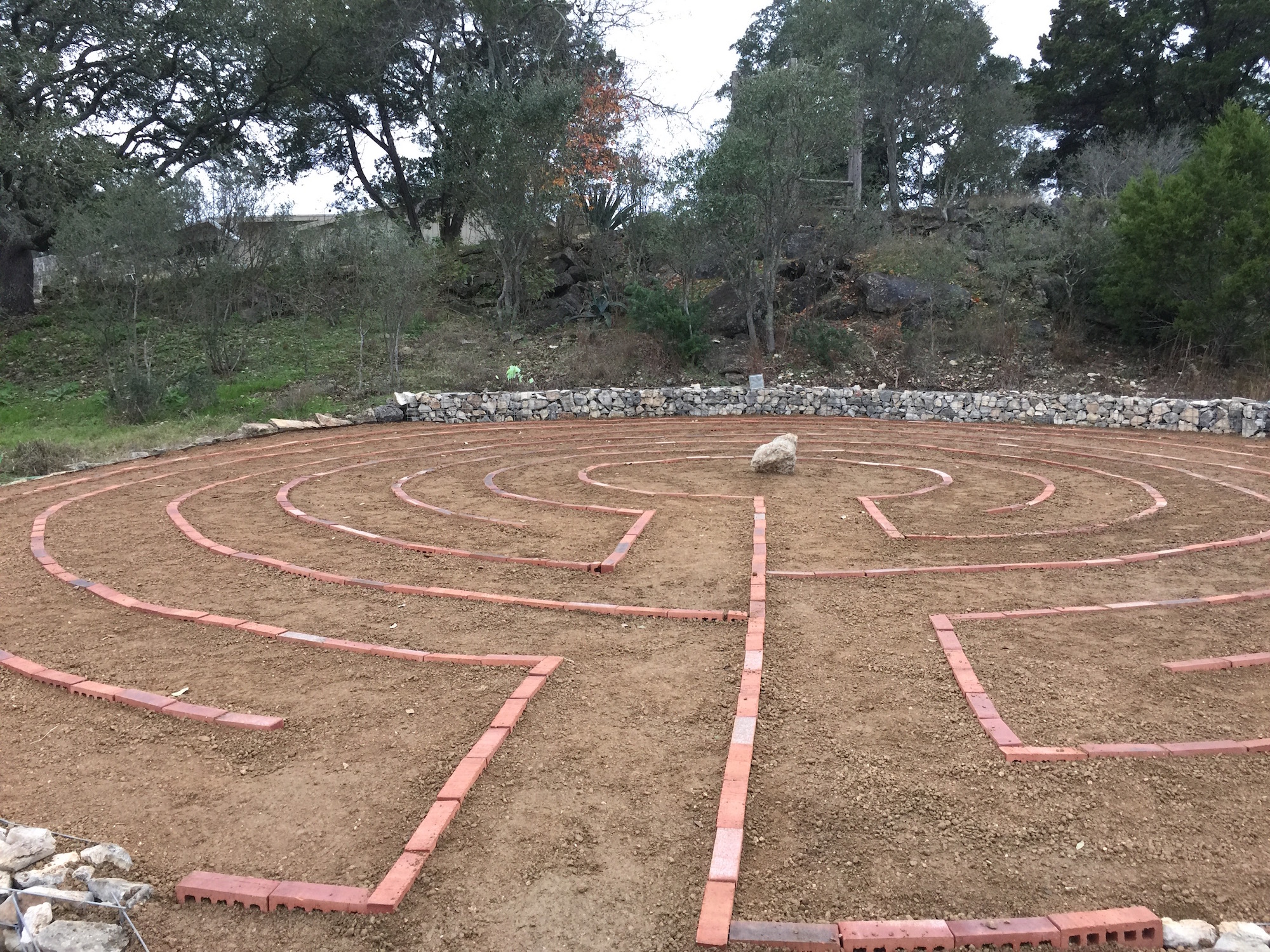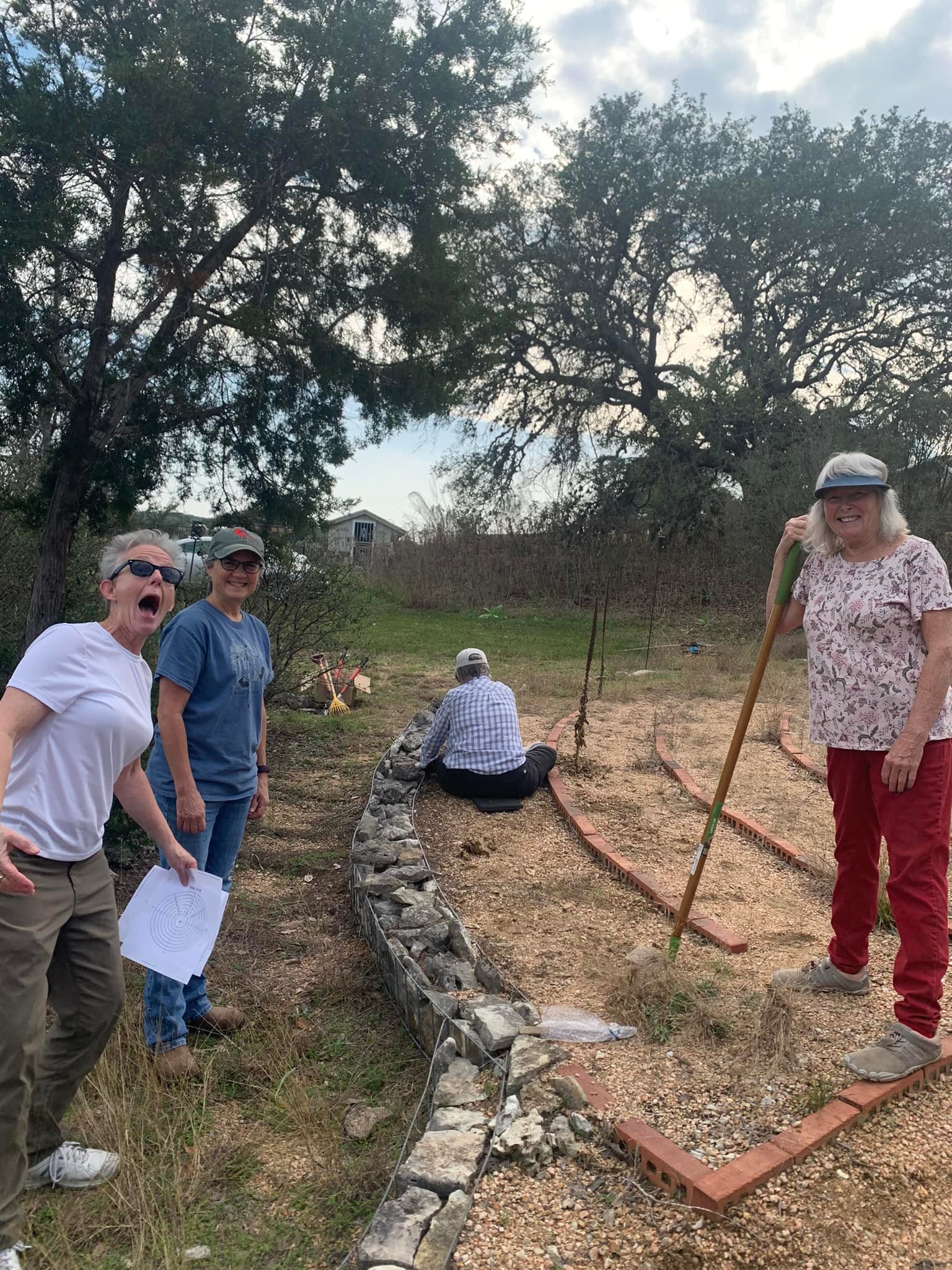Unity of Wimberley's Labyrinth

A labyrinth is an archetypal symbol of wholeness, inviting walkers into a transformative prayer experience. Walking this path is a personal pilgrimage to spiritual wholeness.
The Unity of Wimberley labyrinth is open to the public during daylight hours.
Tradition
Labyrinths have an ancient history dating back at least 4,000 years. Our is based on one of the oldest known designs and is found on 3,000-year-old coins from Crete.
A labyrinth is not a maze; there are no tricks or dead ends. One cannot get lost, and success is assured.
The mystical tradition of labyrinths has been revived in recent years, thanks particularly to the work of Dr. Lauren Artress, an Episcopal priest and author of Walking a Sacred Path: Rediscovering the Labyrinth as a Spiritual Tool. People around the world are once again walking the path and engaging in its powerful process of spiritual transformation.
Guidelines for the Walk
Keep in mind that walking the labyrinth is a sacred activity, and it is not to be rushed or forced. Here are soem suggestions to enrich your prayer walk:
- Stop, relax and breathe deeply at the entrance. You might want to set an intention for yourself before beginning, or formulate a question you would like to have answered.
- Begin walking slowly, following the winding path towards the center. Release any busy thoughts, concerns or burdens of any sort. As your body moves into a peaceful rhythm of contemplation, an awareness the infinite presence active in you may be quickened.
- If you meet a aother walker on the path, simply step aside and pass with reverence.
- When you reach the center, pause for as long as you like and focus your attention on the divine or infinite.
- As you leave the center and begin to return toward the outer edge, maintain serenity and offer silent praise and thanksgiving.
Our Labyrinth's History
The original labyrinth was dedicated on January 1, 2005, when the church was about a year old.
The labyrinth project was headed by Roberta Shoemaker-Beal and Jim Beal and was built with love by Jay Edwards, David and Llea Norboge, Maglin Nippert, Pamela Kenney, Walt Buerhing and others from our community. Thanks to the Amanda Doerr family and many more who contributed to creating a sacred meditation path for all to walk.
And . . .
Wild hogs rooted up the labyrinth repeatedly through the years. So the labyrinth was rebuilt in 2015 by another group of volunteers, this time led by Cynthia Millonzi. The design is the same, but the brick and crushed granite that were used in the construction should not attract hogs.
Our thanks to the most recent labyrinth team: Cynthia Millonzi, Kit Holmes, Tommy Potts, Jon Clayton, Coleen Hilton, Kay Steadman, Diane Chestnut, Scott Price, Roberto Guerra, Toni Harris, and Leslie Howe.

